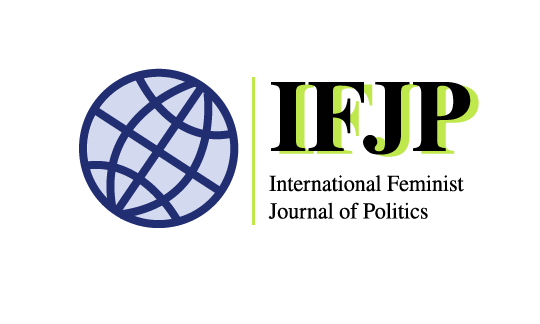Veiled Transgressions: Revisiting Tunisia's Secular/Islamic Divide through the Afterlives of the Hijab Ban
By: Hind Ahmed Zaki (she/her)
In Tunisia, a ban on wearing the veil, known as Circular 108, went into effect starting from mid-1990s, under former president Ben Ali. Known in Tunisia as the Hijab ban, it mostly targeted state-run educational institutions, effectively banning thousands of Tunisian veiled women from attending university, until around late 2000s. The government further widened the ban on the veil in 2003, forbidding female civil servants working in the public health sector from wearing any form of the hijab. While this ban did not extend to female employees working for other governmental agencies or ministries, several women reported that authorities often discriminated against veiled women when they applied for jobs in the public sector, prompting them to seek employment in the private sector instead.
Circular 108 and its various applications, adversely affected the lives of thousands of ordinary Tunisian women in critical ways. Women who wore the Hijab were expelled in their thousands from government universities and schools, harassed by the police on the streets, frequently summoned to the police stations, and excluded from many areas of the labour market. While the number of women affected by the consecutive circulars or by-laws banning the hijab is impossible to estimate, it affected hundreds of thousands of Tunisian women, especially in Tunisia's more conservative and poorer interior regions. The topic was literally a political taboo in authoritarian Tunisia, only coming to light in recent years, following the Jasmine revolution of 2011. As part of Tunisia’s reckoning with decades of political repression, Tunisian women started speaking up about the effects of the circular on their lives. Many of the victims of this repressive state by-law began framing it as a form of religious and gender discrimination.
Graffiti on a Tunisian street reading: Le peuple a libéré la police, ENF IN LIBRES.
My article asks how did Muslim women in Tunisia experience and navigate this decades long ban. It mostly seeks to understand the kinds of societal, political, and community pressures that women faced as they contemplated their choices under both state and societal repression. It seeks to fill a gap in the existing literature that either focused on the legal aspects of the ban, or its symbolic significance when it comes to the politically sensitive Islamic/secular divide in Tunisia, to hone on the everyday experiences of women from different walks of life with veil ban. As such, the article presents their accounts of their own struggles around the veil ban in the 1990s, their resistance tactics in response to the state’s ban itself, and the pressures they faced from multiple domains of patriarchal authority.
The article documents the complex terrain of women's resistance against Circular 108, demonstrating how their lived experiences trouble the official narrative of Tunisia's women friendly state-sponsored feminism by highlighting how it oppressed thousands of Tunisian women who had to make a painful decision whether to continue wearing the veil amid multiple sources of pressure. The women’s narratives about their repertories of resistance showed how the veil ban forced young women to pick among a range of actions that included taking off the veil to continue their education and continuing to wear the veil even if that meant stopping their education. Significantly, many of the women interviewed about their experiences with Circular 108 in the 1990s, mentioned that these choices were also driven by pressures from the families, communities, and whether or not their families were members of sympathizers of the Islamic opposition at the time.
The article’s findings demonstrate how women’s decisions to keep their veils, even at the cost of foregoing higher education and professional careers, were not really theirs, but the result of the competing ideological and political patriarchal authorities of both the secular state, and that of political Islam. I show how decisions to veil or unveil are the product of intricate power dynamics involving multiple patriarchal domains, namely the state, families, communities, and political Islam. These empirical findings challenge the traditional Islamic- versus- secular- theoretical binary that dominated most of the scholarly literature on women’s rights in post-revolutionary Tunisia. Instead, it centres instead the repressive role of both the state and society in the everyday lives of ordinary women as they navigated the politics of veil in authoritarian Tunisia, showing how women often navigate multiple domains of patriarchy and adopt repertories of resistance that defies the often taken for granted split between the social, the political, and the ideological.
Read the full article here: Veiled transgressions: revisiting Tunisia’s secular/religious binary through the afterlives of the hijab ban
Each blog post gives the views of the individual author(s) based on their published IFJP article. All posts published on ifjpglobal.org remain the intellectual property and copyright of the author or authors.
Hind Ahmed Zaki is an Assistant Professor of Political Science, with a joint appointment in the department of Language, Culture, and Literature. She is specialist in comparative politics with a special emphasis in gender and politics and the Middle East and North Africa. Her research focuses on theories of state feminism, feminist movements, gender-based violence, and qualitative research methods. Her current book project focuses on the politics of women’s rights in Egypt and Tunisia in the period following the Arab spring. The book manuscript analyzes how historical constructions of women’s rights, as represented in institutions and narratives of state feminism, shaped feminist mobilization in the course of the Arab Spring, resulting in surprisingly empowering episodes of legal and political mobilization for women’s rights.



